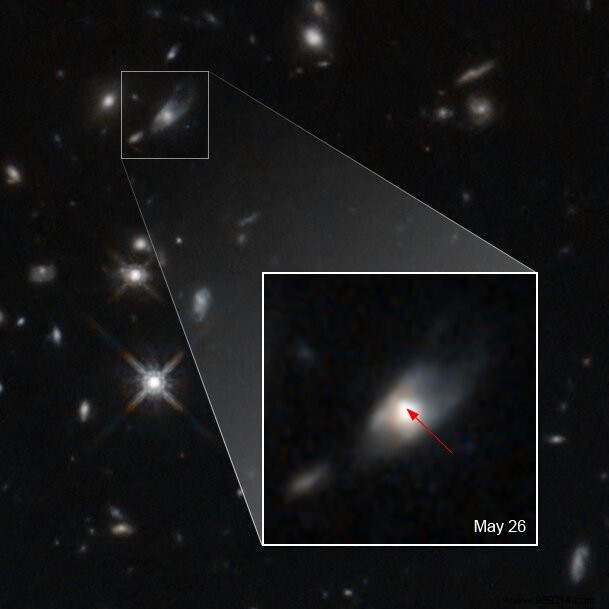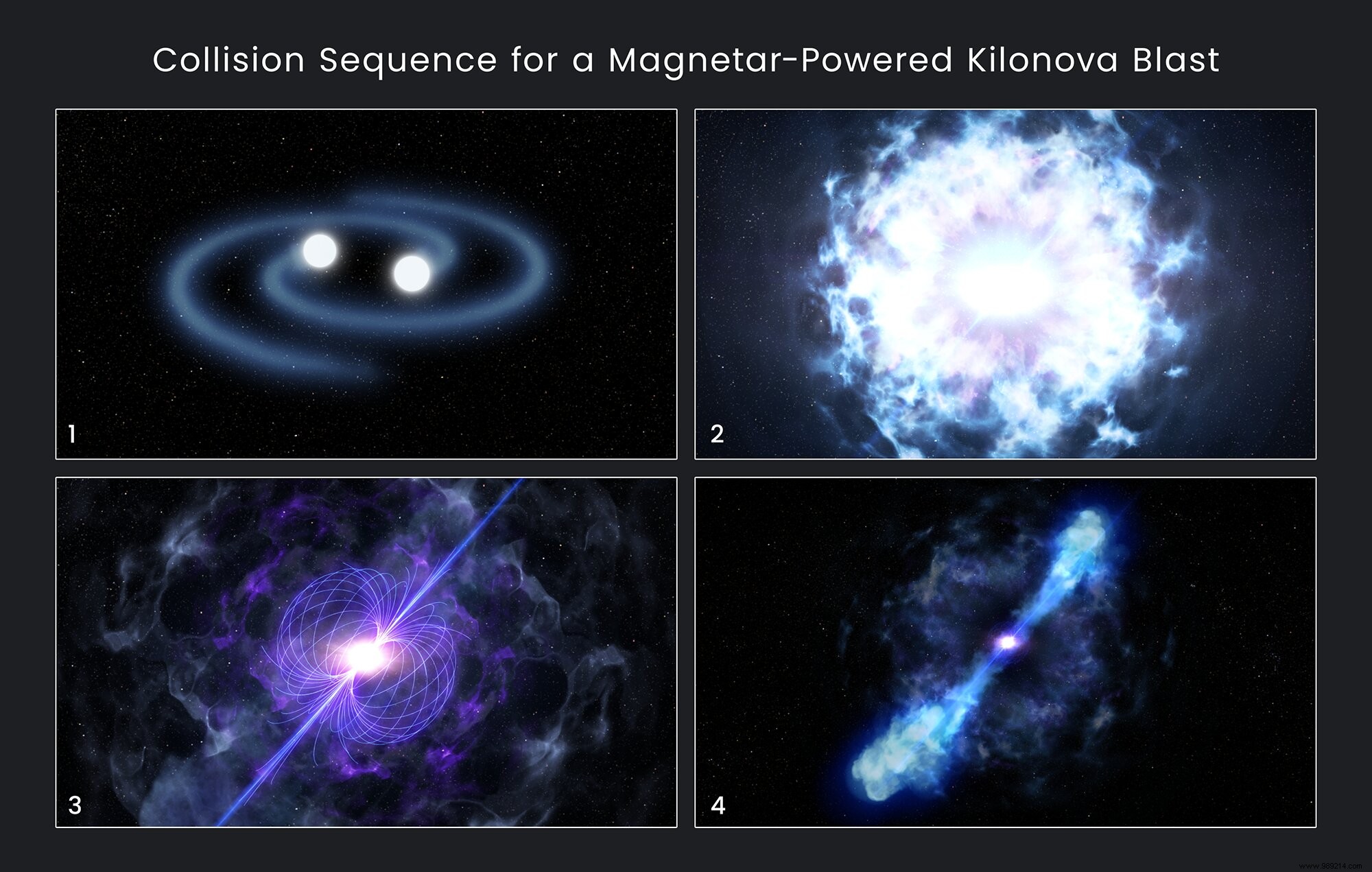A long time ago, in a galaxy far, far away, a huge burst of gamma rays released more energy in half a second than the Sun won't produce any all his life. According to researchers, we may have witnessed the birth of a magnetar from the merger of two neutron stars. If this is indeed the case, it would be a first.
When a massive star reaches the end of its life, its outer envelope is expelled. Its core collapses under the effect of gravity and gives birth to a neutron star. Physically, imagine a small object a few kilometers in diameter whose density is of the order of a billion tons, composed almost entirely of neutrons held together by the force of gravity.
Some of these ultra-concentrated stellar corpses spin very quickly, thus projecting very intense beams of radiation into space . From Earth, if we are in the line of sight, then we have the impression of seeing the neutron star "pulsing" like a beacon in the night. This is called a "pulsar".
Other stellar corpses also exhibit very strong magnetic fields. So this time we're talking about magnetars.
A few months ago, astronomers at Northwestern University relying on NASA's Neil Gehrels Swift Observatory detected an isolated intense glow inside a a distant galaxy. They then enlisted multiple telescopes to observe this brightest 'gamma-burst' ever, in optical, X-ray, near-infrared, and radio wavelengths . Then they raised something strange.
Compared to X-ray and radio observations, the near-infrared emission detected using Hubble was ten times brighter than expected . “This information made us realize that we needed to let go of our conventional thinking and think that we were dealing with a new phenomenon afoot “, explains Wen-fai Fong, lead author of the study.

Astronomers believe these short gamma-ray bursts are generated by the merger of two neutron stars . While most of these mergers usually result in the formation of a neutron star so heavy that it collapses into a black hole within milliseconds, the two neutron stars merged in this case could have combined to form a magnetar.
"Our study shows that it is possible that, for this particular short gamma-ray burst, the heavy object survived. Instead of collapsing into a black hole, it became a magnetar:a rapidly spinning neutron star generating large magnetic fields, spilling energy into its surrounding environment and creating the very bright glow we see. /em> “, summarizes Wen-fai Fong.
"We know magnetars exist because we see them in our galaxy “, continues the researcher. “We think most of them form during the explosive death of massive stars, leaving behind these highly magnetized neutron stars. However, it is possible that a small fraction of these objects are formed by the merger of neutron stars “.

If so, that would be great first, but how can you be sure? If the unexpected light picked up by Hubble was indeed from a magnetar, then the material ejected from the burst should normally produce light appearing below radio wavelengths within a few years. Follow-up observations could then confirm the discovery or not.